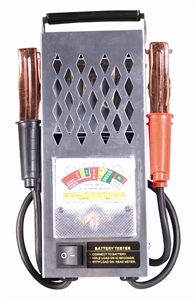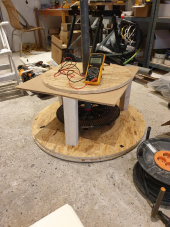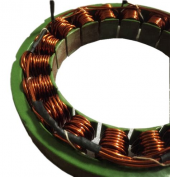brandnewb
Going for serious. starting as newb
i'll be investigating regarding this. thank you
I guess if I stop rambling about this topic then the 'prestige' element will start to dissapear and I fear I might then allow for all kinds of excuses to 'postpone' working on the project. And one thing I have learned in life is that most temporary things turn out to become permanent ;(I'll be honest now. I feel like am creating a logbook more than anything,
Sure many of us are pitching in with each their own expertise and that is exactly how it's meant.
But is one really interested to know where this all leads? in other words shall I only come with questions or is one interested in the journey as well?
Anyhow, you gradually add more weight and load to the turbine, it keeps slowing down, but the torque keeps increasing.
The measured power keeps increasing too, up to some point.
Beyond that, if you overload the turbine, the reduction in speed becomes greater than the measured increase in torque, and measured power falls.
There will be a definite peak in power at some particular rpm for any given wind speed.
If you design your alternator windings and alternator drive ratio around that, you cannot go too far wrong.

that might explain a lot yes. thanks for sharing your insights on thisEmail updates are queued, and occur periodically depending on the forum settings - for instance daily for many forums.
If someone posts, it adds the thread to the email queue. If you post before the queue is sent, then it removes the thread from the queue.
You post frequently, so you won't receive a notification unless someone posts and you don't post for a day or so after their post.
oops, Ender 5 plus, not max. max is not a thing in this contextI am now using the Ender 5 max

ok, it's official now. 242 mv at 60 rpm using an iron powder filled disk.209 millivolts as apposed to 177 without iron powder.\
Don't worry about atmospheric influences. the disk is meant to be fully cast in resin after prototypingThat iron powder sounds like a pretty effective abrasive.
It might work for a while, but I doubt if it will improve your windings or bearings over time.
If it ever gets even slightly wet, it will probably quickly turn into a very solid lump of brown rust.
this is the correct type of frustration I am feeling now. I am literally buzzing. my butt cheeks are trembling. where do I go with these findings?ok, it's official now. 242 mv at 60 rpm using an iron powder filled disk.
Where should I publish my findings for a scientific peer review before I start calling all the news agencies?
That was my reaction to this as well.I'd think magnetic material there could short out part of the field you're trying to get into the coil, not enhance it. I'd think diamagnetic material would be more useful.
Filling in the air gap around the windings with iron (powder) will hugely increase the magnetic field strength by eliminating the air gap in the magnetic path, but it will also destroy the windings ability to work as its supposed to work.



